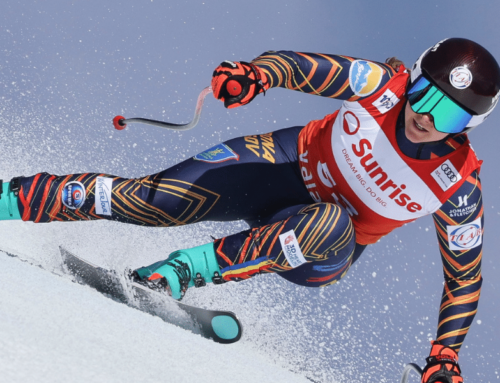Ski racing is like sleep
Having just read the title of my new article, you may be thinking: “Has Dr. Jim finally lost it? What does sleep have to do with ski racing?” Let me explain.
Have you ever tried to sleep? You lie in bed and tell yourself that you have to sleep and you try, try, try to sleep. It doesn’t work, does it? Why? Because sleep can’t be forced.
So, how do you fall asleep? You create an external and internal environment that allows sleep to come. Externally, you make sure your room is quiet, dark, and warm. You have a comfortable bed, pillow, and comforter (maybe even a teddy bear or blankie). Internally, you take breaths, relax your body, and clear your mind. Having created this environment within and outside of yourself, your mind and body are prepared to accept the sleep that will naturally follow.
So, how is ski racing like sleep? You can’t try to ski fast. Forcing yourself to ski fast creates overthinking, muscle tension, and the attempt to control your body in the hopes that you can make your body ski fast. But, the harder you try to ski fast, the less likely you will ski fast.
Just like sleep, you want to create an external and internal environment that will allow fast skiing to emerge naturally. The external environment has two levels. First, as a foundation, it includes having a good training schedule leading up to the race, being organized, and being on top of your school work. Second, on race day, it involves having your equipment optimally prepared, having a good inspection and skiing warm-up, and being around a supportive coach and teammates before your race run.
The internal environment also has two levels. First, going into the race, you should be healthy (no injuries or illness), rested, in top physical condition, well fueled, and with minimal stress. You should also be well trained with solid technique and tactics. Second, on race day, internal means having a healthy perspective about the race, having clear goals, and having fun. It also mean being mentally prepared, that is, being motivated, confident, energized, focused, and happy.
Creating these environments that encourage fast skiing can’t be left to chance. The “foundation” environments that I just discussed can best be developed by having a good training plan, eating well, getting a good nights’ sleep (but don’t try to!), keeping up with your schoolwork, and, in general, just being disciplined and diligent about everything that can impact your ski racing.
On race day, there are two tools you can use for creating those ski fast environments. First, mental imagery during inspection, on the lift, and in the start area before your race run primes your mind and body for the competition, ingrains successful images that translate into more confidence, and focuses your mind on what you need to do to ski fast.
Second, the total preparation of a pre-race routine includes a good physical warm-up, making sure your equipment is prepared optimally, reaching your ideal intensity, narrowing your focus onto the race, and grabbing your best mindset. A structured and consistent race day routine can be the final piece of the pre-race puzzle that ensures you have created those ideal internal and external environments that allow fast skiing to come as naturally as a deep slumber.
















